FOIA eyes only: how did Whitehall departments respond to freedom of information requests in Q1 2016?
Leah Owen looks at the latest quarterly data on how well government departments and other public bodies are responding to Freedom of Information (FOI) requests.
Between January and March 2016, monitored government bodies received 12,791 FoI requests.
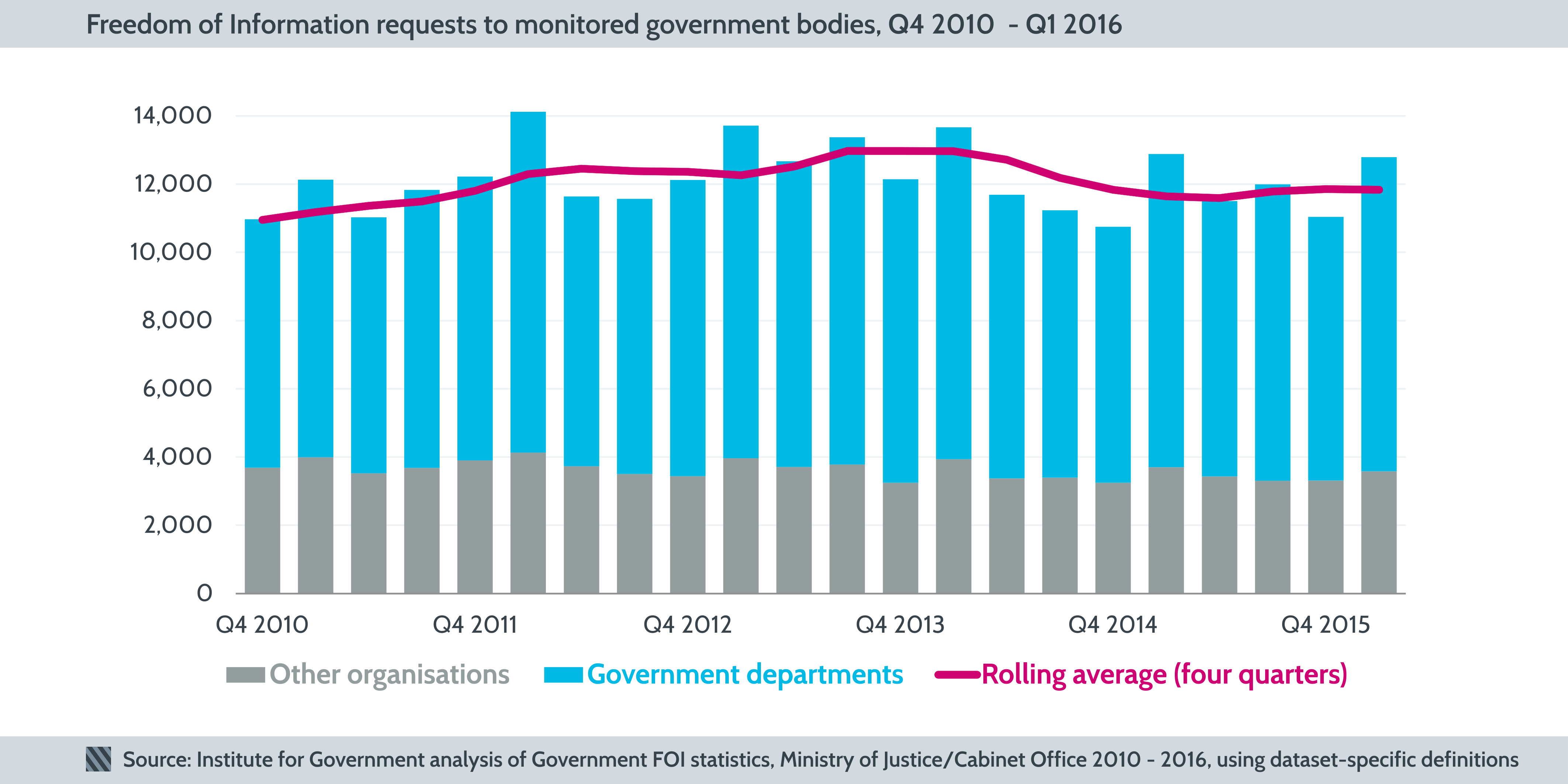
In the first quarter of 2016, government departments (as defined by the Cabinet Office, which publishes the numbers) received 9,208 Freedom of Information (FoI) requests, and the other monitored government organisations received 3,583 requests, making for a total of 12,791 requests. This was more than the amount of requests received in the fourth quarter of 2015, but slightly less than the number received in the same quarter in 2015. This follows the pattern of a yearly peak in the number of requests in the first three months of each year. The four-quarter rolling average of FoI requests received for the start of 2016 is slightly higher than it was at the end of 2011.
In Q1 2016, MoD received the most FoI requests; the ‘territorial’ offices received the fewest.
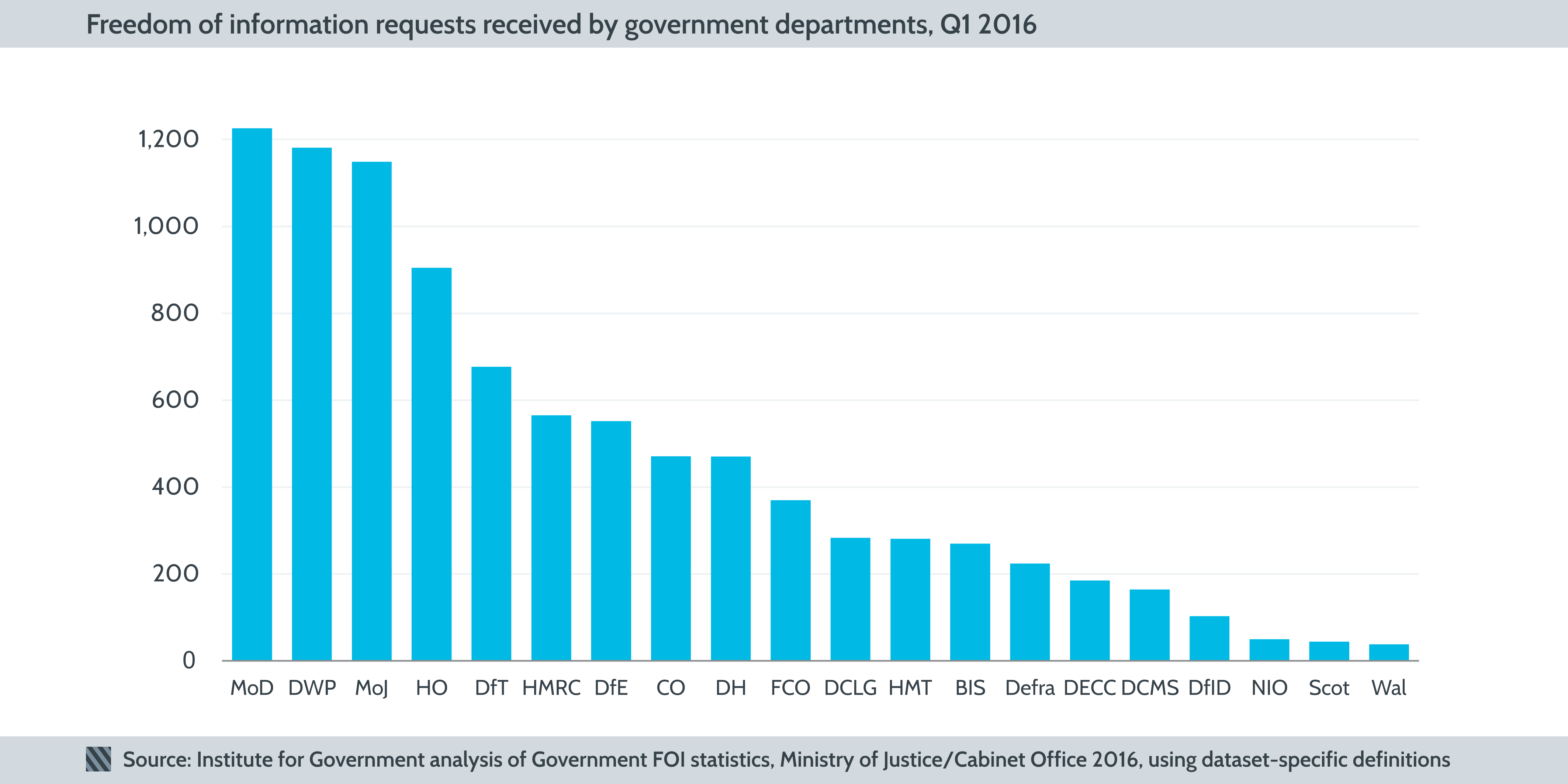
MoD received the most requests (1,226) in the first quarter of 2016, up from receiving the third most requests in the fourth quarter (Q4) of 2015. This is the first time that MoD has been the most ‘FoI’d’ department since Q1 2011. Apart from this, the order of departments remained roughly the same, and the ‘territorial’ offices – NIO, the Scotland Office, and the Welsh Office – received the fewest, all 50 or less. DECC, DCMS, and DfID all received less than 200 requests.
All departments except HMRC received more requests than in the previous quarter.
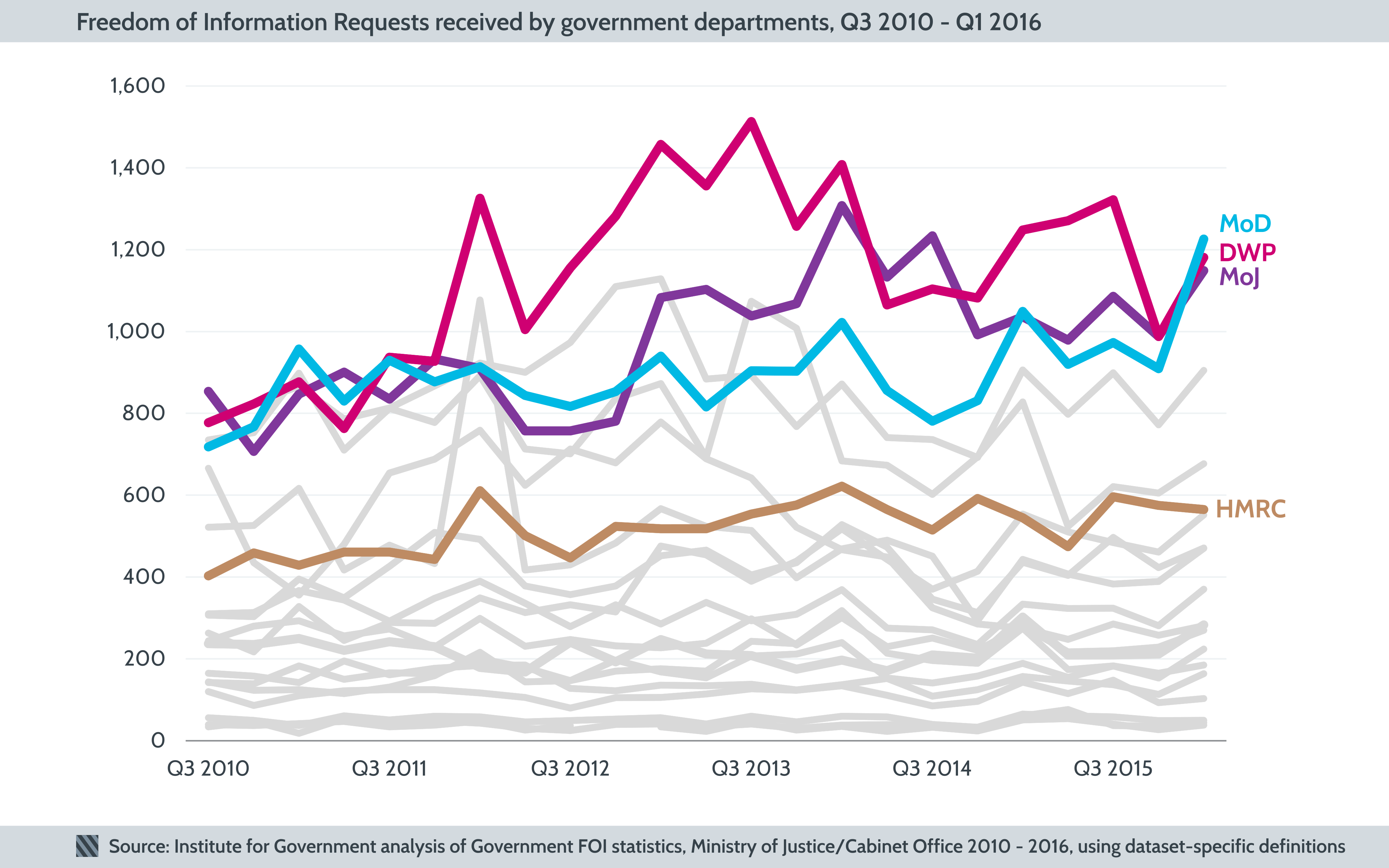
In line with a greater total number of FoI requests to departments, all departments except HMRC saw an increase in the number of requests they received from Q4 2015, with MoD, DWP, and MoJ receiving the most requests. Defra, DCMS, the Welsh Office, and MoD saw the greatest percentage increase in the number of requests they received from Q4 2015 to Q1 2016.
In Q1 2016, two departments responded to all FoI requests ‘in time’, but the Scotland Office was late to respond to nearly 40%.
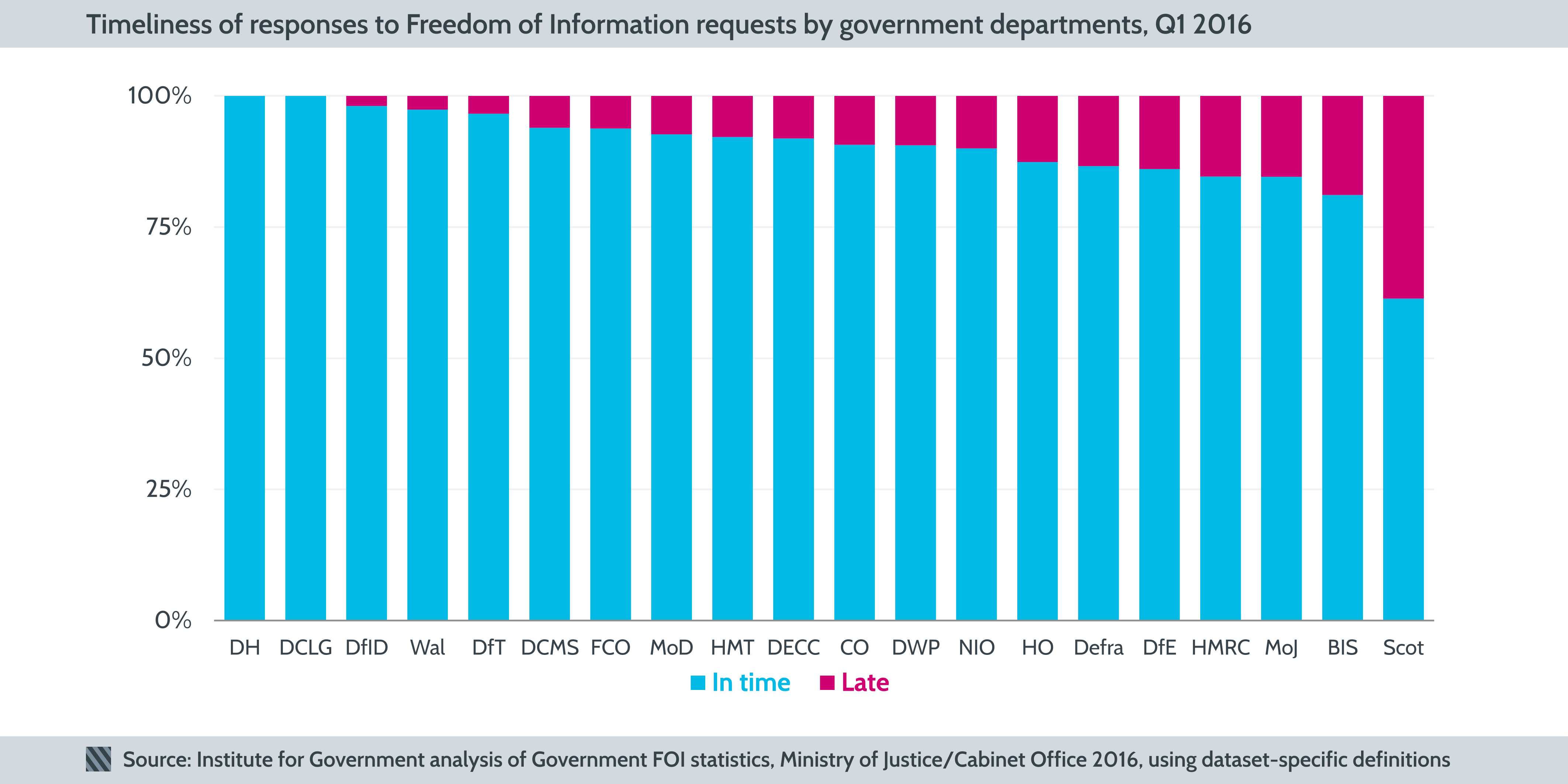
Unless an extension has been permitted, organisations are required to respond to FoI requests within 20 working days, with a general requirement for public bodies to respond to 85% in time or be considered for formal monitoring. Two departments – DH and DCLG – responded to all requests on time. Four departments – HMRC, MoJ, BIS, and the Scotland Office – failed to reach this standard, an improvement on six departments failing to meet the standard last quarter. HMRC and MoJ both came within 0.5% of meeting this standard, while the Scottish Office failed to respond to 38.6% of requests in time.
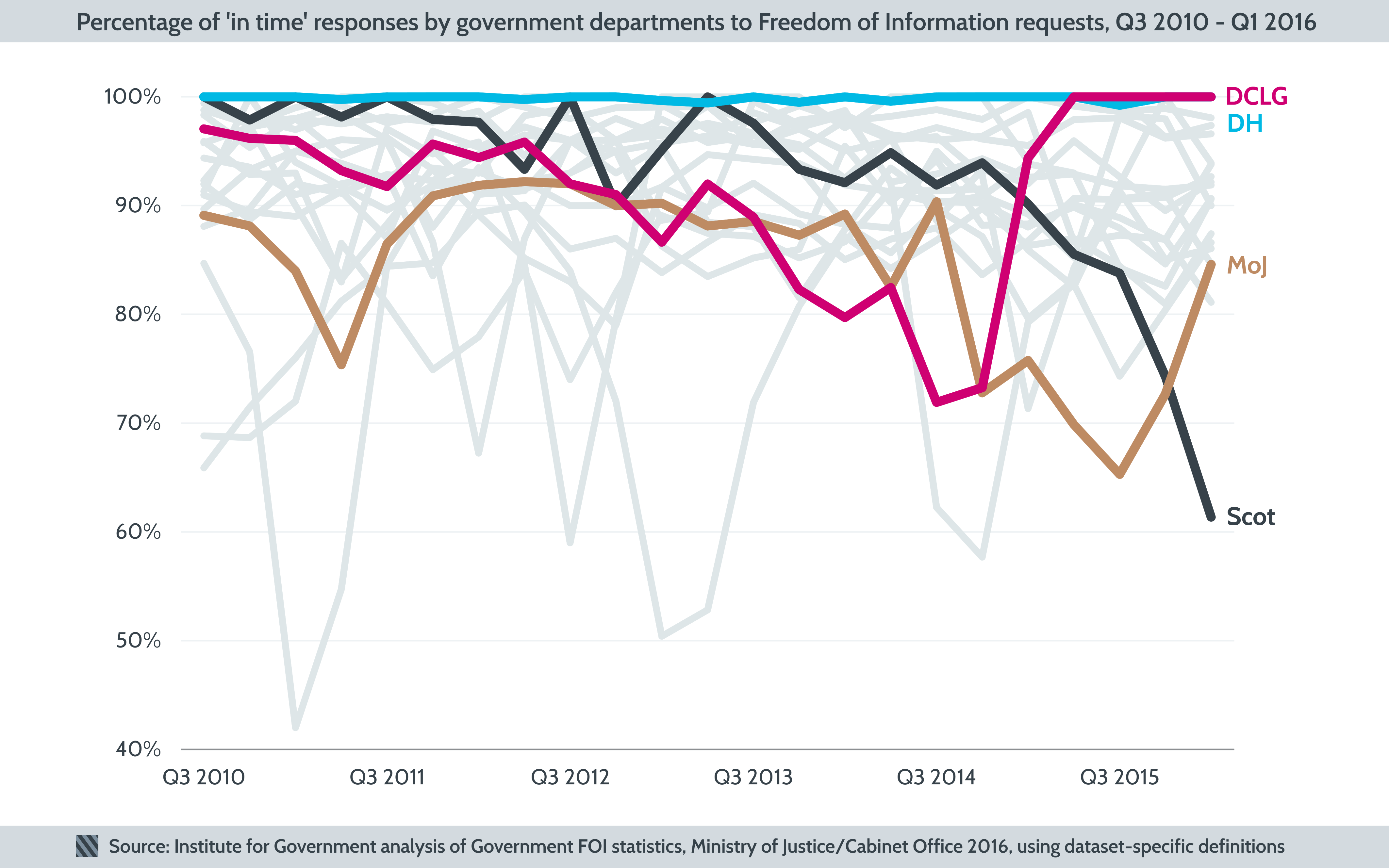
As we noted in our last review of FoI statistics, the MoJ had been placed under monitoring for ‘unacceptable delays’ in responding to requests in September 2015. While still below the 85% threshold, its timely response rate continues to recover from 65% in Q3 2015 to 73% in Q4 2015 to 84.6% in Q1 2016. The Scottish Office’s response rate, by contrast, has continued to decline – from 84% in Q3 2015 to 74% in Q4 2015 and 61% in Q1 2016.
CO and HMRC continue to be the departments that most often fully withhold information in response to FoI requests.
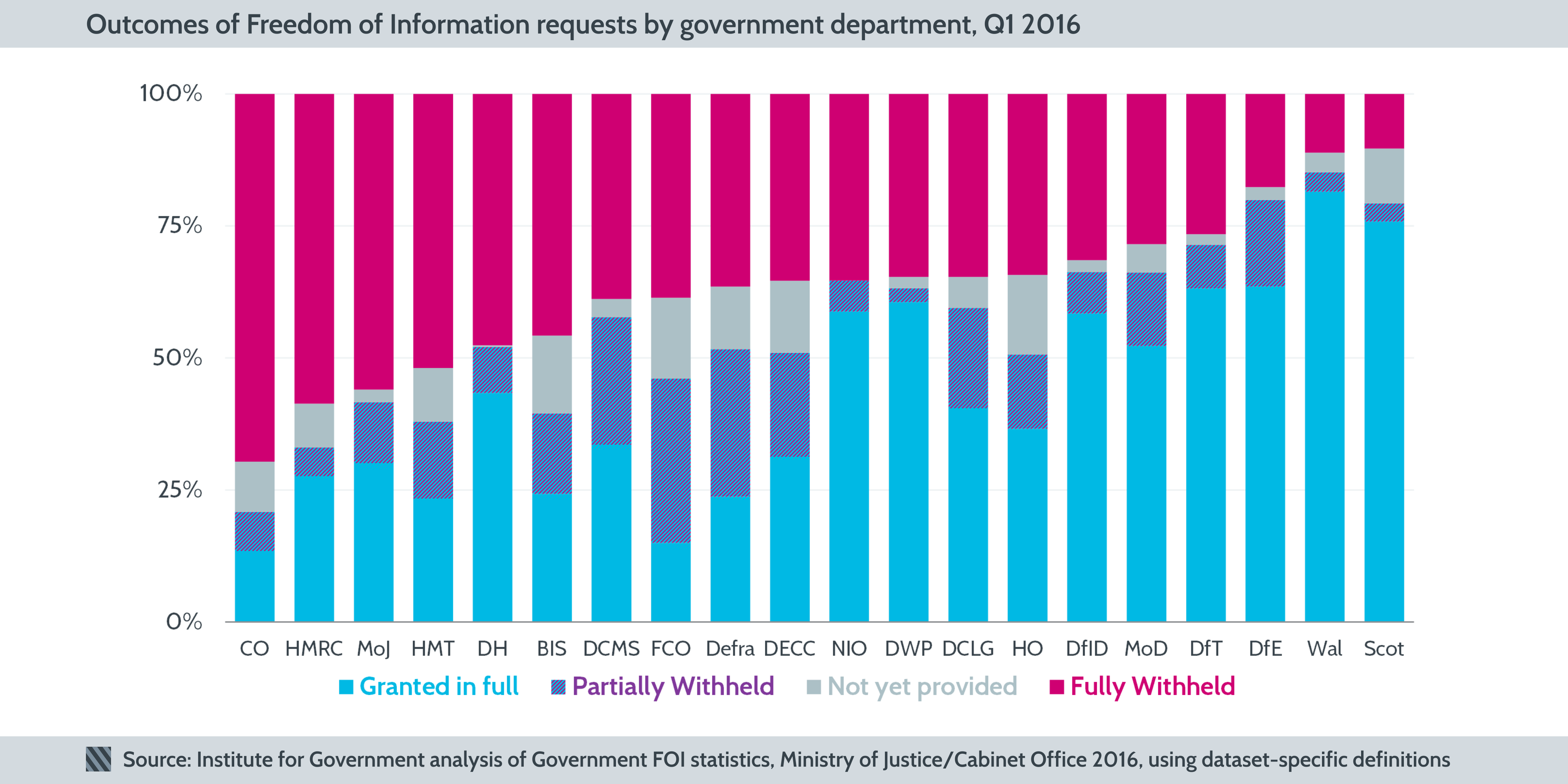
CO, which took over freedom of information policy last year, is the department that most regularly uses the exceptions and exemptions permitted by the Freedom of Information Act (FOIA) to withhold information; together with HMRC and MoJ, it has occupied this position for some time. In Q1 2016, CO only granted 13.5% of requests in full, withholding 69.6% in their entirety. This is a noticeable increase on information withholding from Q4 2015, when it granted 24% of requests in full, and fully withheld information in 62% of cases.
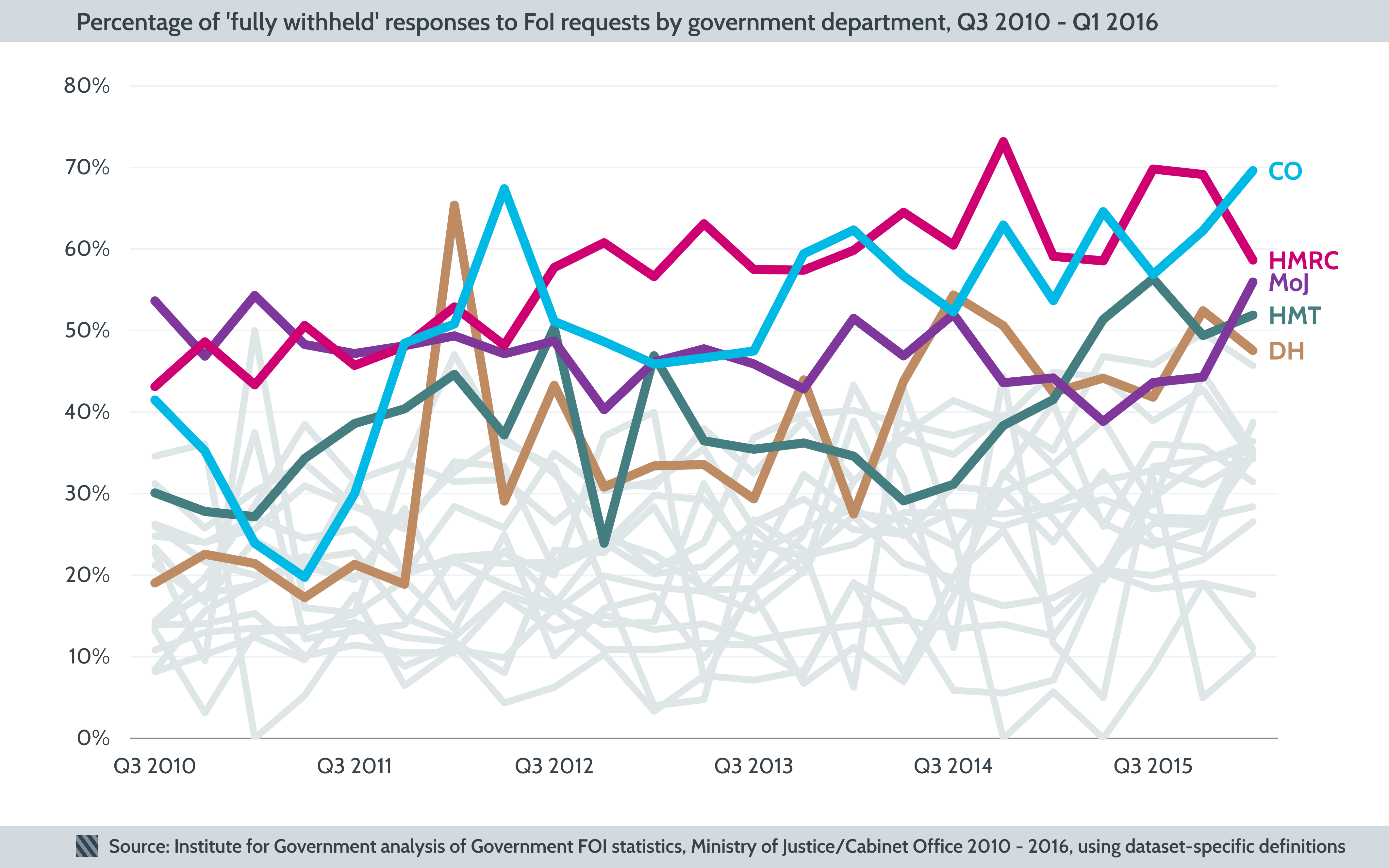
Across all government bodies, the ‘personal information’ exemption continues to be used more than any other.
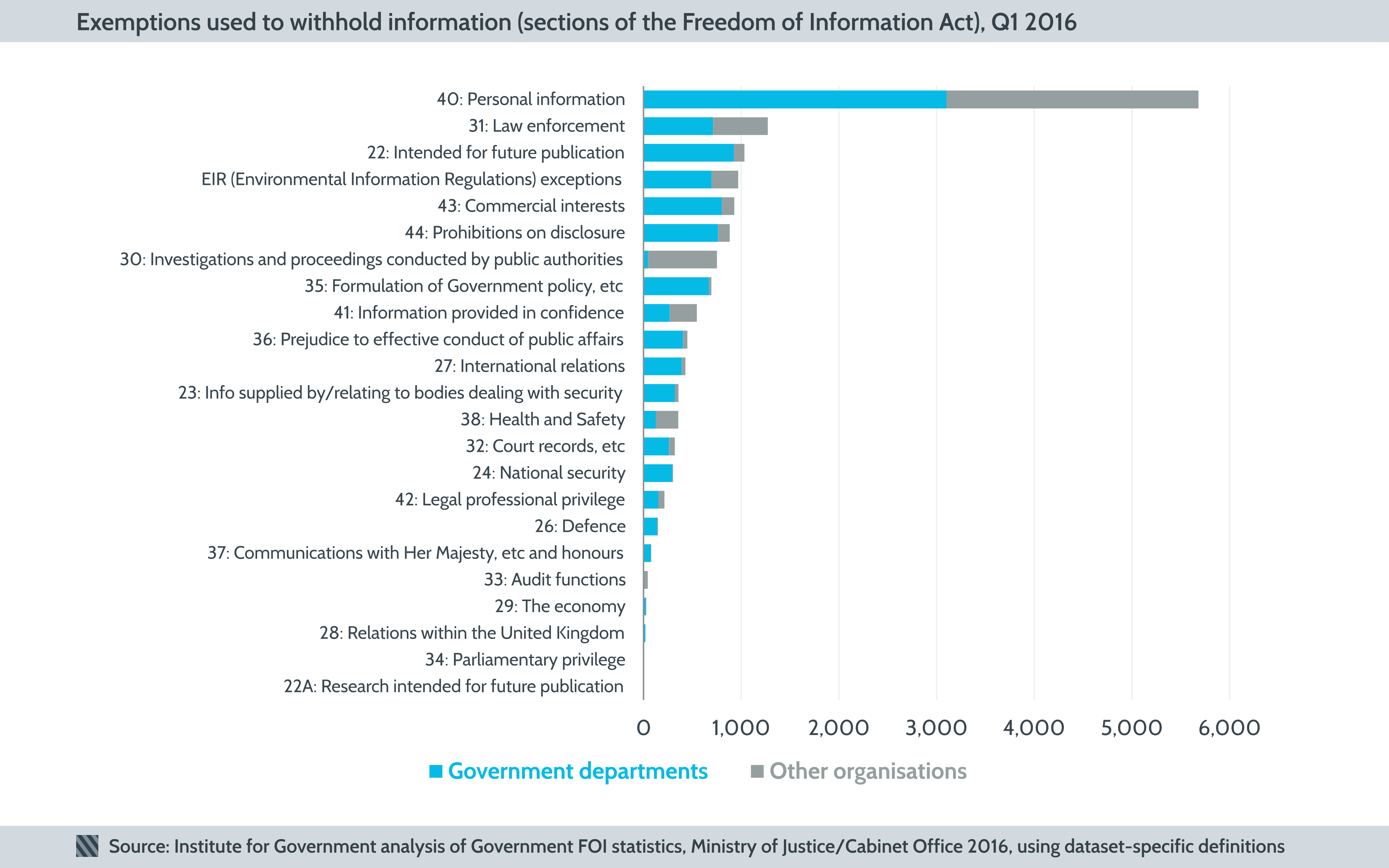
FOIA allows organisations to withhold some or all relevant information in certain conditions, or exemptions. HMRC, for example, are prohibited from releasing specific personal information, largely for reasons of safeguarding data. In Q1 2016, the most commonly used exemption was Section 40: Personal Information (35% of exemptions), followed by Section 31: Law Enforcement (7.2% of exemptions), and Section 22: Intended for Future Publication (6.7% of exemptions).
Different departments used their exemptions to different degrees.
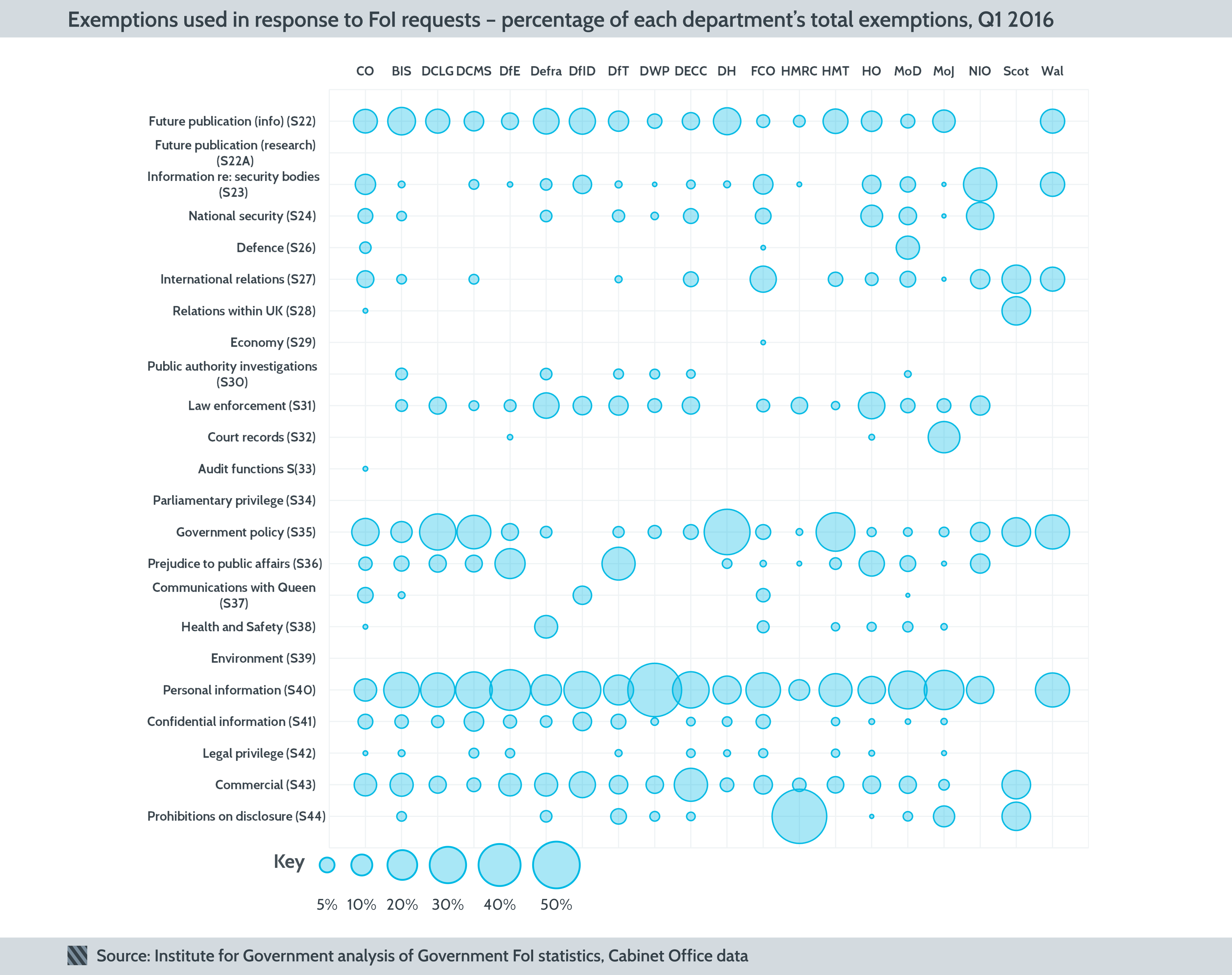
As we might expect, many departments make a significant fraction of their exemptions on the grounds of personal information, but other areas are more varied. DfID make a number of their objections on grounds of Communications with the Queen and Honours, while a large fraction of DfT’s exemptions are on the grounds of prejudice to public affairs. The single largest reason for DH’s exemptions are because requested information might contain protected content relating to the formation of government policy, or ministerial correspondence. Responding to information requests is an important part of a department’s work, and, as we’ve seen, the workload falls unevenly across departments, with patterns of timeliness, responsiveness, and withholding changing over time. Numbers for April to June 2016 will be published on 22 September, when we’ll bring you the latest charts.